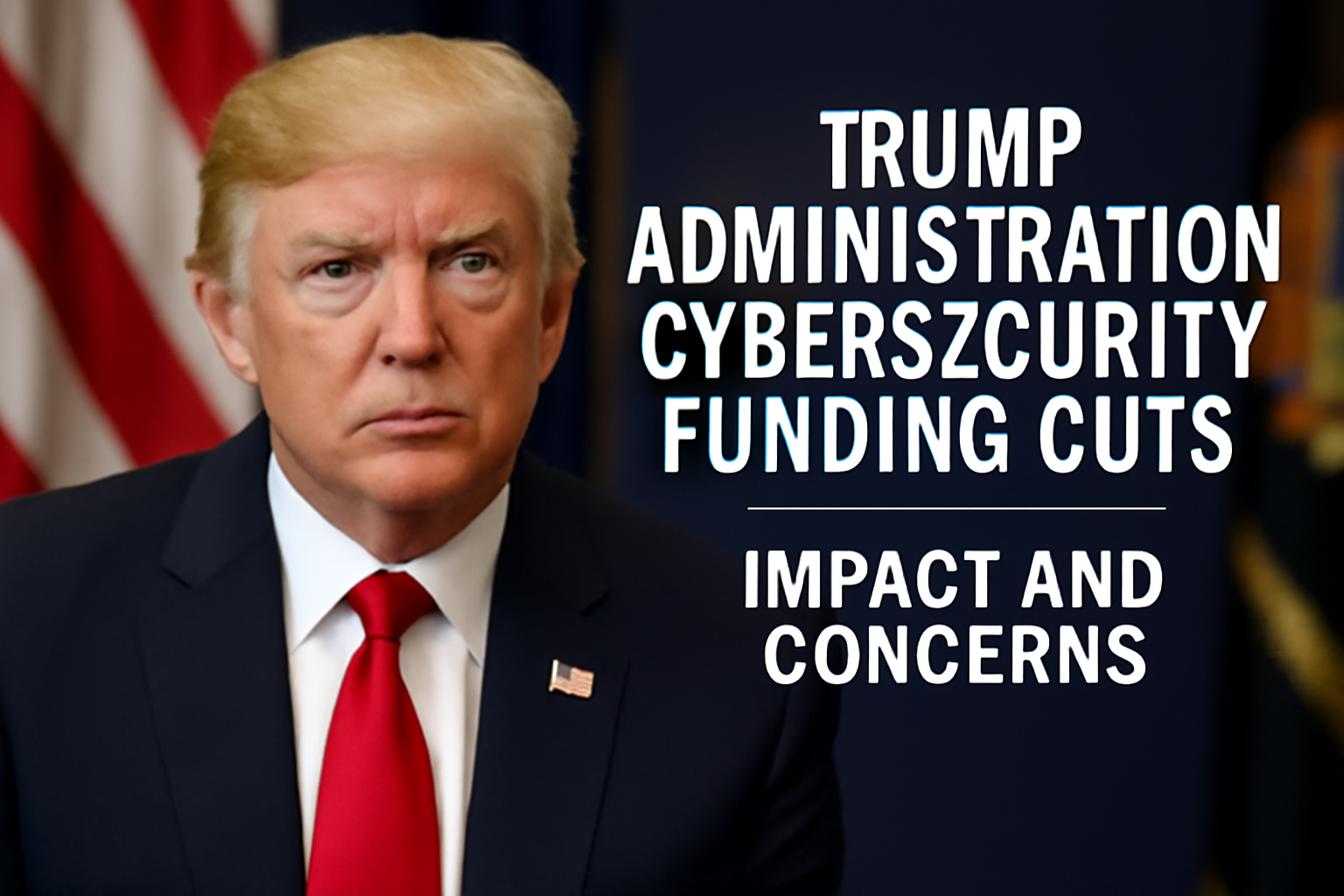The Trump administration cybersecurity funding cuts have had a significant impact on the U.S. government’s ability to protect national infrastructure from cyber threats. Cybersecurity has always been a key concern for national security, and with the cuts, questions arose about how effective the country’s cyber defense system could be in the long term. In this article, we will explore the reasons behind these cuts, the implications for U.S. cybersecurity, and the consequences for various industries.
Why Did the Trump Administration Cut Cybersecurity Funding?
The Trump administration cybersecurity funding cuts stemmed from broader budgetary decisions aimed at reducing government spending. One of the key motivations for these cuts was the administration’s focus on reducing the federal budget deficit. In particular, the Department of Homeland Security (DHS) and other key agencies like the Cybersecurity and Infrastructure Security Agency (CISA) saw reductions in their budgets for cybersecurity initiatives.
While the Trump administration argued that the cuts were part of a broader effort to eliminate wasteful spending, critics voiced concerns about the long-term risks associated with reducing cybersecurity investments. As cyberattacks became increasingly sophisticated and frequent, these budget cuts were seen as a risky move in an era of escalating cyber threats.
Impact on National Cybersecurity and Key Infrastructure
1. Vulnerabilities in Critical Infrastructure
One of the most significant consequences of the Trump administration’s cybersecurity funding cuts was the increased vulnerability of critical national infrastructure. With reduced budgets, agencies responsible for securing sectors like energy, telecommunications, and finance struggled to enhance their cybersecurity defenses.
Critical Infrastructure Protection (CIP) efforts, including monitoring and defending against cyberattacks targeting energy grids or water supplies, were particularly affected. Without proper funding, many agencies faced difficulty keeping pace with evolving cyber threats, which are increasingly being used as tools of warfare or sabotage.
2. Increased Risks for Private Sector Businesses
Cybersecurity is not just a government issue; it also affects private sector businesses, many of which are critical to national and economic security. The funding cuts led to a reduced ability for federal agencies to support private organizations in implementing strong cybersecurity measures. The Cybersecurity Framework (CSF) developed by the National Institute of Standards and Technology (NIST) was one such program that benefited from government funding but became strained as resources were cut.
The reduced support from federal agencies left many private businesses exposed to potential cyberattacks. This heightened risk ultimately impacts consumers and employees across the country, who are increasingly reliant on digital services and products.
What Were the Long-Term Effects on Cybersecurity Research and Development?
The cuts to cybersecurity funding also had long-term effects on research and development (R&D) efforts within the United States. Innovation in cybersecurity technologies requires substantial investments in R&D to stay ahead of increasingly sophisticated cybercriminals.
During the Trump administration, key research programs that focused on cybersecurity technology were either scaled back or eliminated, potentially stalling advancements in areas such as artificial intelligence and machine learning-based threat detection. These technologies are essential to developing next-generation cyber defense systems capable of anticipating and neutralizing cyberattacks before they can cause widespread damage.
How Did Other Countries Respond to the U.S. Cybersecurity Funding Cuts?
1. Growing Cyber Espionage Threats
Other nations, particularly adversarial countries, observed the Trump administration cybersecurity funding cuts as an opportunity to increase their own cyber capabilities. Countries like China and Russia have long been accused of using cyber espionage to infiltrate systems and steal sensitive information.
By cutting cybersecurity funding, the U.S. signaled a potential decrease in its defense posture. This created an opening for cybercriminals and state-sponsored hackers to exploit vulnerabilities in the U.S. infrastructure, with some experts speculating that this may have led to a surge in cyberattacks targeting the U.S. government and private sector during the Trump era.
2. Shift in Global Cybersecurity Leadership
As the U.S. faced budgetary constraints, other nations were quick to invest in their own cybersecurity capabilities. European countries, in particular, responded with increased funding and support for their cybersecurity programs, strengthening their own resilience against digital threats. In contrast, the Trump administration’s cuts left the U.S. with a less robust global cybersecurity presence, diminishing its role as a leader in digital security on the international stage.
What Are the Lessons Learned from the Trump Administration’s Cybersecurity Funding Cuts?
The Trump administration cybersecurity funding cuts highlighted several important lessons about the relationship between national security and government spending. One of the key takeaways is the importance of maintaining adequate investment in cybersecurity infrastructure, especially as cyber threats continue to evolve.
While fiscal responsibility is essential, cybersecurity is a critical component of national defense. The administration’s decisions served as a reminder of how important it is to strike a balance between budget cuts and safeguarding national security interests.
Conclusion: The Need for Increased Cybersecurity Funding Going Forward
The Trump administration cybersecurity funding cuts provided a cautionary tale for future administrations and lawmakers. Cybersecurity should not be viewed as a discretionary budget item but as a fundamental pillar of national security. As cyber threats continue to grow in sophistication and frequency, it’s crucial that the U.S. government and private sector work together to ensure that sufficient resources are allocated to cyber defense programs.
For the country to stay ahead in the battle against cybercrime and cyber warfare, a comprehensive approach to cybersecurity funding and innovation is needed. This includes not only bolstering federal cybersecurity budgets but also ensuring strong partnerships with the private sector, encouraging public-private collaboration, and investing in research and development for next-generation cybersecurity solutions.
For further reading on the impact of cybersecurity on infrastructure, check out CISA – Cybersecurity and Infrastructure Security Agency. Additionally, for an in-depth look at the U.S. National Cybersecurity Strategy, visit the White House’s National Cybersecurity Strategy Fact Sheet.
Call to Action
Interested in learning more about cybersecurity and its impact on the global stage? Stay updated on the latest trends in digital security and policy by following our in-depth articles on national security and cybersecurity issues. Explore more insights on private sector cybersecurity in national security through Jurnalin’s.










اترك رد